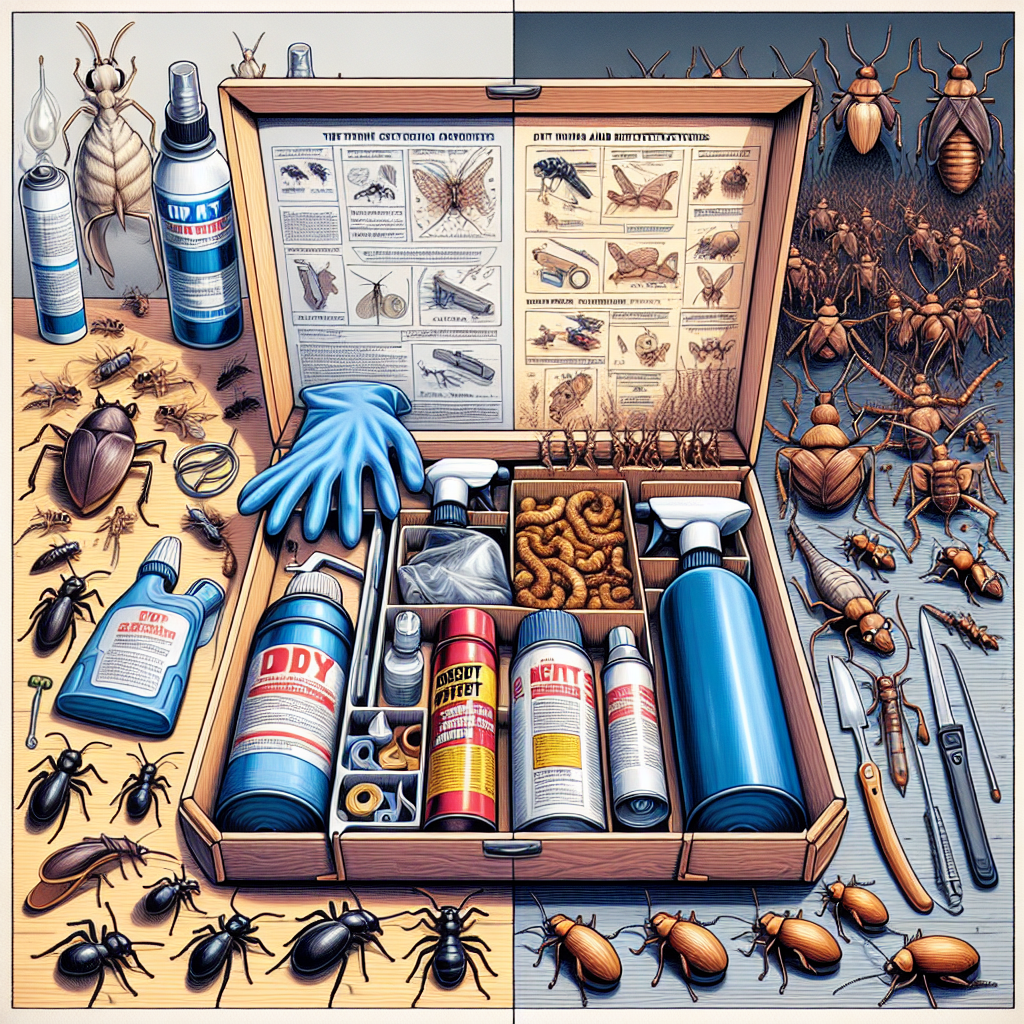As homeowners, we all share a common dread: pests. Whether it’s ants marching across the kitchen counter or a rogue mouse scurrying under the sofa, the presence of unwelcome guests can turn a peaceful home into a source of anxiety. Enter the allure of DIY pest control kits. Marketed as quick, easy, and budget-friendly solutions for a pest-free life, these kits are gaining popularity. But the burning question remains: how effective are they? Let’s delve into the truth about DIY pest control kits and what you need to know before reaching for that box on the shelf.
Understanding DIY Pest Control Kits
DIY pest control kits range from simple sprays and traps to comprehensive packages that claim to handle various pest infestations. They are typically readily available at local hardware stores or online, making them an attractive option for homeowners looking to save money.
What’s Inside a DIY Pest Control Kit?
Most pest control kits contain a combination of baits, traps, and pesticides specifically formulated for common household pests. Here are some common components you can expect to find:
- Sprays and Liquid Solutions: These often target insects and require careful application to be effective.
- Baits: Attractive to pests, these usually contain a poison that pests consume and carry back to their nest.
- Traps: These are designed to physically catch pests, whether it be sticky pads for insects or baited traps for rodents.
The Appeal of DIY Solutions
One key factor driving the popularity of DIY kits is empowerment. Homeowners appreciate the ability to tackle pest problems without the expense of hiring a professional exterminator. Furthermore, many feel that taking matters into their own hands gives them more control over the situation.
The Pros and Cons of DIY Pest Control Kits
While DIY pest control kits can be effective in certain situations, they are not a one-size-fits-all solution. Let’s break down the pros and cons:
Pros
-
Cost-Effective: Compared to hiring a pest control service, DIY kits are typically much cheaper, making them an appealing option for budget-conscious homeowners.
-
Availability: DIY kits are widely available and can be purchased from various retail outlets, providing immediate access to pest control solutions.
- Simplicity: Most kits come with clear directions, making it easier for homeowners to use the products effectively.
Cons
-
Limited Effectiveness: DIY kits may not always tackle severe infestations. In some cases, pests can be more resilient than the treatments provided in these kits.
-
Potential Health Risks: Many DIY pest control products contain chemicals that can be harmful if mishandled. Proper protective gear and precautions are necessary during use.
- Lack of Expertise: Without professional training, homeowners may misidentify pests or misapply products, leading to wasted time and resources.
How to Enhance DIY Pest Control Effectiveness
If you opt for a DIY pest control kit, there are several strategies you can employ to increase your chances of success:
Accurate Identification of Pests
Identifying the specific type of pest you’re dealing with is crucial. Each pest may require a different method of control. Take some time to research and ensure you’re targeting the right issue.
Follow Instructions Thoroughly
Always adhere to the guidelines provided with the kit. Proper application is key to effectiveness, including correct dosage and placement.
Combine Methods
Using multiple strategies may yield the best results. For example, combining baits with traps can enhance overall effectiveness, reducing both the adults and eggs in your home.
Regular Maintenance
Keeping your home clean and reducing potential breeding grounds can help prevent future infestations, making any DIY pest control more effective over time.
When to Call a Professional
While DIY pest control kits can be effective for minor issues, certain situations warrant professional intervention. If you encounter a severe infestation, suspect structural damage, or are dealing with potentially hazardous pests like termites or wasps, it’s best to leave it to the experts.
Conclusion
In the battle against unwanted pests, DIY pest control kits offer a convenient, cost-effective solution for many homeowners. However, understanding their limitations and taking a strategic approach is vital for maximizing their effectiveness. Whether you decide to tackle the situation yourself or call in a professional, maintaining a proactive stance against pests will go a long way in preserving the comfort and safety of your home. Remember, awareness and preparation are your best defenses against those pesky invaders!


